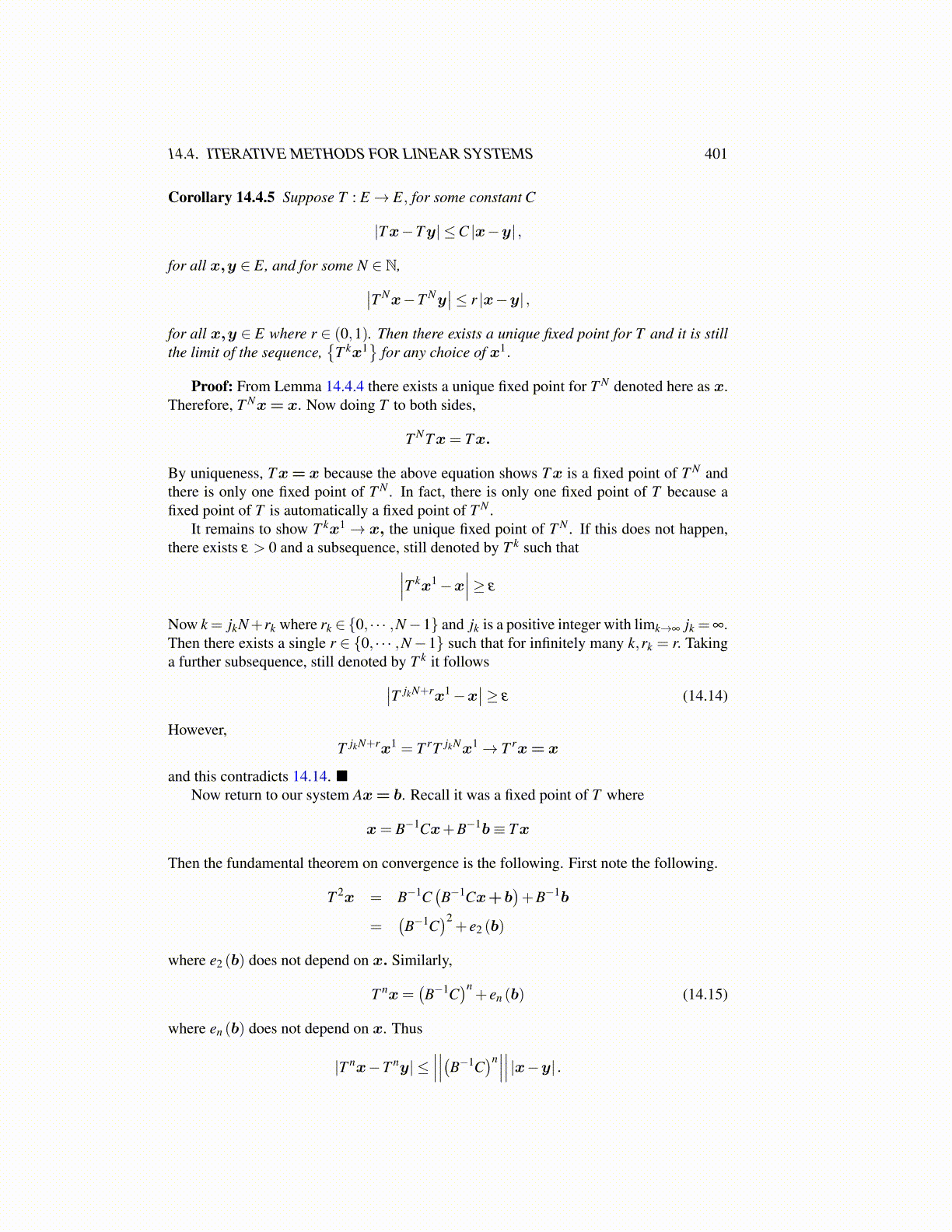
14.4. ITERATIVE METHODS FOR LINEAR SYSTEMS 401
Corollary 14.4.5 Suppose T : E→ E, for some constant C
|Tx−Ty| ≤C |x−y| ,
for all x,y ∈ E, and for some N ∈ N,∣∣T Nx−T Ny∣∣≤ r |x−y| ,
for all x,y ∈ E where r ∈ (0,1). Then there exists a unique fixed point for T and it is stillthe limit of the sequence,
{T kx1
}for any choice of x1.
Proof: From Lemma 14.4.4 there exists a unique fixed point for T N denoted here as x.Therefore, T Nx= x. Now doing T to both sides,
T NTx= Tx.
By uniqueness, Tx= x because the above equation shows Tx is a fixed point of T N andthere is only one fixed point of T N . In fact, there is only one fixed point of T because afixed point of T is automatically a fixed point of T N .
It remains to show T kx1 → x, the unique fixed point of T N . If this does not happen,there exists ε > 0 and a subsequence, still denoted by T k such that∣∣∣T kx1−x
∣∣∣≥ ε
Now k = jkN+rk where rk ∈{0, · · · ,N−1} and jk is a positive integer with limk→∞ jk =∞.Then there exists a single r ∈ {0, · · · ,N−1} such that for infinitely many k,rk = r. Takinga further subsequence, still denoted by T k it follows∣∣T jkN+rx1−x
∣∣≥ ε (14.14)
However,T jkN+rx1 = T rT jkNx1→ T rx= x
and this contradicts 14.14. ■Now return to our system Ax= b. Recall it was a fixed point of T where
x= B−1Cx+B−1b≡ Tx
Then the fundamental theorem on convergence is the following. First note the following.
T 2x = B−1C(B−1Cx+b
)+B−1b
=(B−1C
)2+ e2 (b)
where e2 (b) does not depend on x. Similarly,
T nx=(B−1C
)n+ en (b) (14.15)
where en (b) does not depend on x. Thus
|T nx−T ny| ≤∣∣∣∣∣∣(B−1C
)n∣∣∣∣∣∣ |x−y| .